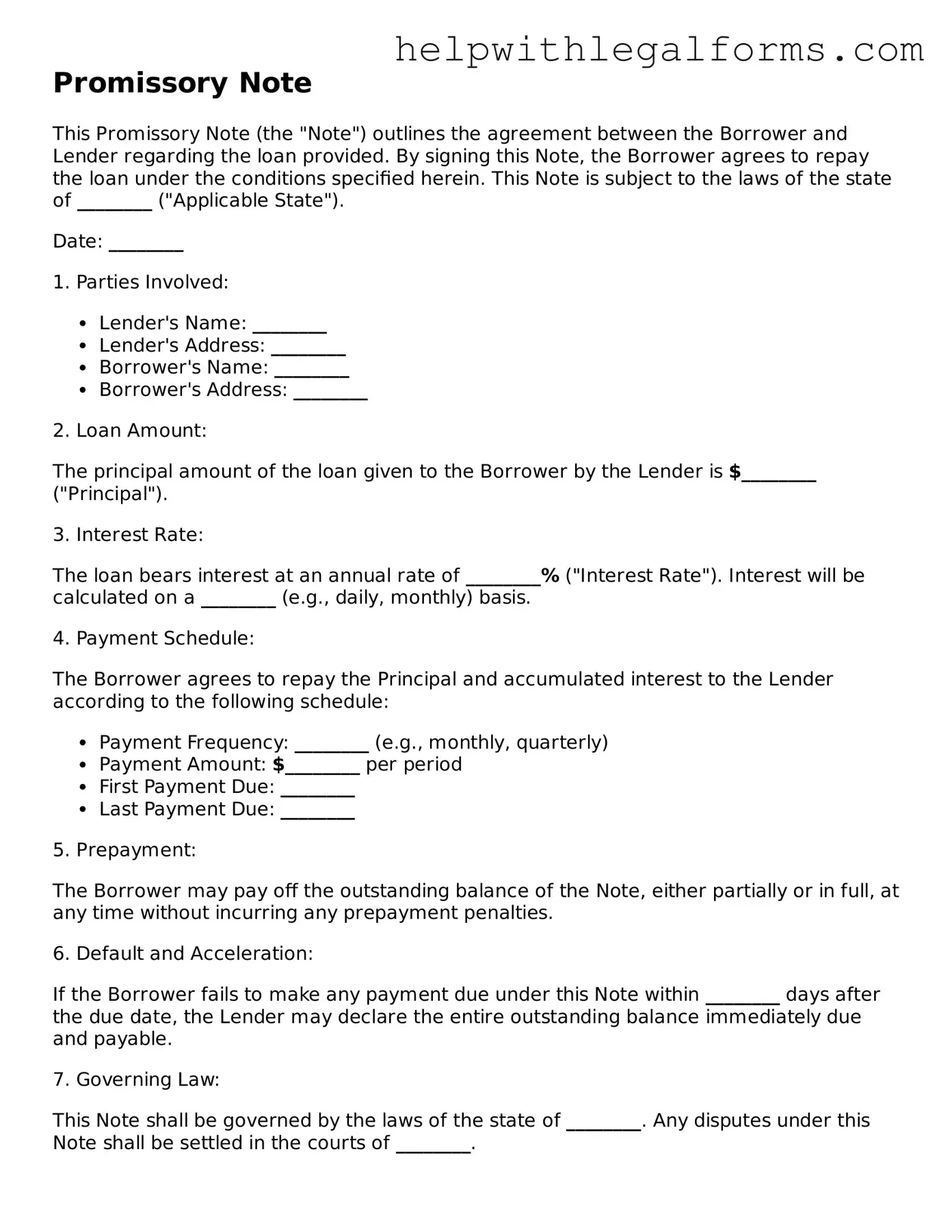Promissory Note
This Promissory Note (the "Note") outlines the agreement between the Borrower and Lender regarding the loan provided. By signing this Note, the Borrower agrees to repay the loan under the conditions specified herein. This Note is subject to the laws of the state of ________ ("Applicable State").
Date: ________
1. Parties Involved:
- Lender's Name: ________
- Lender's Address: ________
- Borrower's Name: ________
- Borrower's Address: ________
2. Loan Amount:
The principal amount of the loan given to the Borrower by the Lender is $________ ("Principal").
3. Interest Rate:
The loan bears interest at an annual rate of ________% ("Interest Rate"). Interest will be calculated on a ________ (e.g., daily, monthly) basis.
4. Payment Schedule:
The Borrower agrees to repay the Principal and accumulated interest to the Lender according to the following schedule:
- Payment Frequency: ________ (e.g., monthly, quarterly)
- Payment Amount: $________ per period
- First Payment Due: ________
- Last Payment Due: ________
5. Prepayment:
The Borrower may pay off the outstanding balance of the Note, either partially or in full, at any time without incurring any prepayment penalties.
6. Default and Acceleration:
If the Borrower fails to make any payment due under this Note within ________ days after the due date, the Lender may declare the entire outstanding balance immediately due and payable.
7. Governing Law:
This Note shall be governed by the laws of the state of ________. Any disputes under this Note shall be settled in the courts of ________.
8. Signatures:
By signing below, both parties agree to the terms of this Note.
- Lender's Signature: ________ Date: ________
- Borrower's Signature: ________ Date: ________
